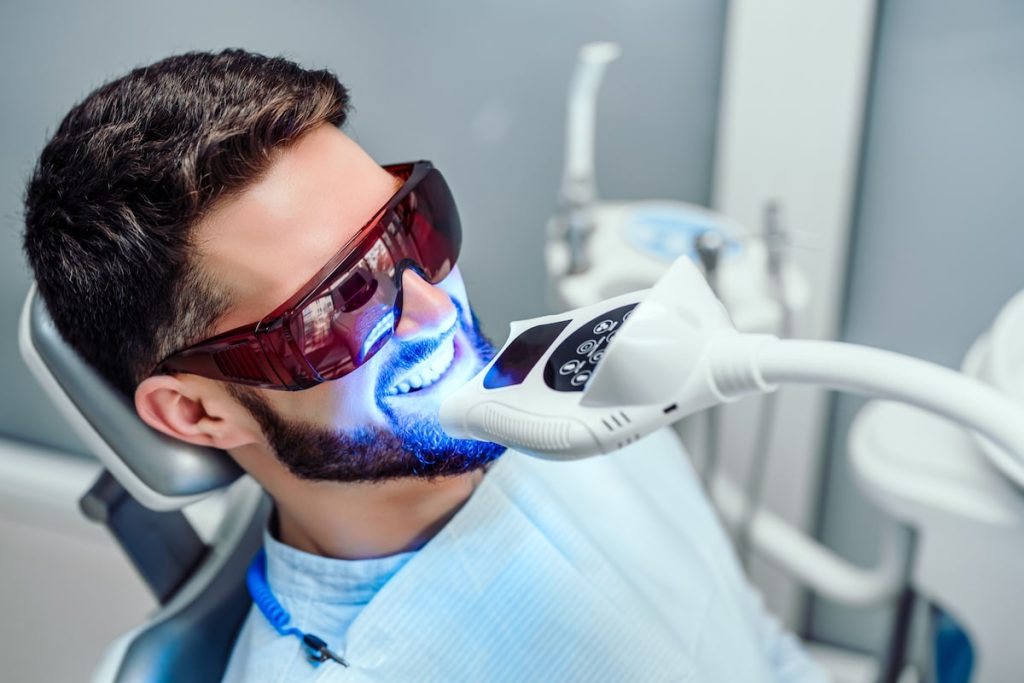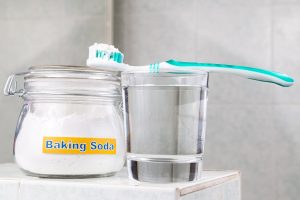July 19, 2024
Dr. Andres de Cardenas
All-on-4 dental implants, cosmetic bonding, Cosmetic Dental Care Services, cosmetic dentist Miami, Cosmetic Dentist Whitening, Cosmetic Dentistry, Daily Health Tips, dental care, Dental Care Tips, Dental Cleaning Appointment, Dental Implant Procedure, dental solutions, Dentist Appointment, family dental Care dentist, Family Dentist, FL, healthy teeth, Natural teeth whitening, Oral Cancer, Oral Care, professional denstists, Smile Makeover, Teeth Alignment, Teeth discoloration, Teeth Whitening, teeth whitening sensitive teeth, The Miami Cosmetic Dentist
Family Dental Care Miami | Miami Cosmetic Dentist > Blog > Blog - Category > Pearly Whites: Unlock the Secret to a Perfect Smile with Teeth Whitening
Pearly Whites: Unlock the Secret to a Perfect Smile with Teeth Whitening

Welcome to the world of Pearly Whites! A smile is the universal language of kindness, but what if you’re not confident enough to show off your pearly whites? Yellow or stained teeth can be a major confidence killer, leaving you feeling insecure and self-conscious. That’s where the magic of teeth whitening comes in! With the best whitening techniques and products, you can unlock the secret to a perfect smile that lights up the room and leaves everyone in awe.
Let’s face it, with all the coffee, tea, red wine, and other foods and drinks we consume, it’s easy for our teeth to become discolored and dull. But that doesn’t mean you have to settle for a less-than-perfect smile! Whether you’re getting ready for a special event or just want to boost your confidence, teeth whitening can help you achieve the dazzling smile of your dreams.
But with so many teeth whitening options out there, it can be overwhelming to choose the right one for you. From over-the-counter whitening strips to in-office treatments, there are countless ways to whiten your teeth. That’s why we’ve put together this comprehensive guide to help you navigate the world of whitening and find the best option for your unique needs.
In this guide, we’ll explore the different types of whitening, including at-home options and professional treatments. We’ll also dive into the science behind whitening and explain how it works to give you a brighter, more beautiful smile. Plus, we’ll share some tips and tricks for maintaining your pearly whites and preventing future discoloration.
So get ready to unlock the secret to a perfect smile and discover the best teeth-whitening techniques and products out there. Say goodbye to yellow teeth and hello to confidence and radiance!
Understanding Teeth Discoloration
Teeth discoloration is a common dental problem that affects people of all ages. Discoloration can occur for a variety of reasons, including genetics, poor oral hygiene, certain medications, and lifestyle factors such as smoking and drinking coffee, tea, or red wine. While discoloration may not be a serious medical condition, it can affect a person’s self-confidence and willingness to smile.
There are two main types of teeth discoloration: extrinsic and intrinsic. Extrinsic discoloration affects the outer layer of the tooth (the enamel) and is caused by external factors such as food, drink, and tobacco. Intrinsic discoloration, on the other hand, affects the inner layer of the tooth (the dentin) and is caused by internal factors such as genetics, age, and medication.

Extrinsic discoloration is generally easier to treat and can often be resolved with regular dental cleanings, whitening toothpaste, or over-the-counter whitening products such as strips or gels. Intrinsic discoloration, on the other hand, may require more advanced treatments such as professional teeth whitening or dental bonding.
It’s important to note that teeth discoloration can also be a sign of more serious dental problems such as tooth decay, gum disease, or enamel erosion. If you notice sudden or severe discoloration, it’s important to consult a dental professional to rule out any underlying issues.
Prevention is key when it comes to teeth discoloration. Maintaining good oral hygiene habits such as brushing twice a day, flossing daily, and visiting the dentist regularly can help prevent discoloration from occurring in the first place. Additionally, avoiding foods and drinks that are known to stain teeth, such as coffee, tea, and red wine, can also help keep teeth looking bright and white.
What Is teeth whitening?
Teeth whitening is a cosmetic dental procedure that can help improve the appearance of stained or discolored teeth. There are several whitening options available, ranging from at-home treatments to in-office procedures. Understanding the different options can help you make an informed decision about which method is right for you.
In-office Teeth Whitening Dentist
In-office teeth whitening is a professional whitening treatment that is performed by a dentist or a dental hygienist. This method of whitening is considered to be the most effective and fastest way to achieve a brighter smile. The treatment typically takes about an hour and involves the use of a bleaching agent that is applied directly to the teeth.
During the in-office whitening procedure, the dentist or dental hygienist will first clean and prepare the teeth for treatment. They will then apply a protective gel or rubber shield to the gums to protect them from the bleaching agent. Next, they will apply the bleaching agent to the teeth, which is usually a hydrogen peroxide solution.
The bleaching agent is activated by a special light that is used to speed up the whitening process. The light can be either a halogen light or an LED light, depending on the type of treatment being used. The light is directed onto the teeth for a specific amount of time, typically 15-20 minutes, before being removed and reapplied for additional sessions.
One of the major advantages of in-office teeth whitening is that it provides immediate results. Patients can walk out of the dental office with a noticeably brighter smile in just one visit. In-office whitening is also much more effective than at-home whitening treatments, as the bleaching agent used in the office is stronger and can penetrate deeper into the teeth.
However, in-office whitening can be more expensive than at-home treatments, as it is a professional service that requires specialized equipment and expertise. Patients may also experience some tooth sensitivity or discomfort during or after the treatment, although this is usually temporary.
At-Home Teeth Whitening
At-home teeth whitening is a popular and convenient option for those looking to brighten their smile without the time and expense of professional treatments. There are a variety of at-home whitening products available, including whitening toothpaste, strips, gels, and trays. These products use different active ingredients and application methods, so it’s important to choose the one that best fits your needs and preferences.
Whitening toothpaste is the most basic option, as it uses abrasives or enzymes to remove surface stains on the teeth. While it can be effective for minor discoloration, it may not be strong enough for deeper stains. Whitening strips and gels, on the other hand, use hydrogen peroxide or carbamide peroxide to penetrate the enamel and whiten the teeth. They are typically applied directly to the teeth and left on for a specified amount of time, usually around 30 minutes.
Another popular at-home whitening option is the whitening tray, which is customized to fit your teeth and filled with a whitening gel. These trays are worn for a specified amount of time, usually a few hours a day or overnight, and can be purchased over the counter or through your dentist. While they may be more effective than strips or toothpaste, they can also be more expensive and time-consuming.
It’s important to note that teeth whitening care products at home may not be suitable for everyone, especially those with sensitive teeth or underlying dental issues. It’s always a good idea to consult with your dentist before starting any whitening treatment, as they can help you determine the best option for your teeth and provide guidance on proper use and safety precautions.
Natural Teeth Whitening Remedies

If you’re looking for a more natural way to whiten your teeth, there are several remedies you can try at home. While these remedies may not be as effective as professional whitening treatments, they can still help remove surface stains and brighten your smile. Here are some natural whitening remedies you can try:
Baking soda and hydrogen peroxide: Baking soda is a natural abrasive that can help remove surface stains from your teeth, while hydrogen peroxide is a natural bleaching agent. Mix a small amount of baking soda with hydrogen peroxide to form a paste, then brush your teeth with the mixture for 2 minutes. Rinse your mouth thoroughly with water afterward.
Coconut oil pulling: Coconut oil pulling involves swishing coconut oil in your mouth for several minutes to remove bacteria and promote oral health. Some people also claim that coconut oil pulling can help whiten teeth. Simply swish a tablespoon of coconut oil in your mouth for 10-15 minutes, then spit it out and rinse your mouth with water.
Apple cider vinegar: Apple cider vinegar is a natural acid that can help remove surface stains from your teeth. However, it’s important to use caution when using apple cider vinegar, as it can also erode your tooth enamel if used too frequently or in high concentrations. Mix a small amount of apple cider vinegar with water and swish it in your mouth for a few seconds before rinsing it with water.
Strawberries: Strawberries contain malic acid, which can help remove surface stains from your teeth. Simply mash a few strawberries into a pulp, then apply the mixture to your teeth and let it sit for 5 minutes before rinsing with water.
While natural teeth whitening remedies can be effective for removing surface stains, it’s important to remember that they may not work as well as professional whitening treatments. Additionally, some natural remedies can be abrasive or acidic, which can damage your tooth enamel if used too frequently or in high concentrations. Always talk to us before trying any new whitening remedy.
Pros And Cons Of Different Whitening Products
When it comes to teeth whitening, there are many options to choose from, each with its own set of pros and cons. Understanding these can help you make an informed decision about which option is best for you. Let’s take a closer look at the pros and cons of each whitening option.
Over-the-Counter Whitening Products:
Pros:
- Widely available and affordable
- Easy to use at home
- Variety of options, such as whitening strips, gels, and trays
Cons:
- May not be as effective as professional treatments
- Can cause sensitivity or gum irritation
- Results may vary depending on the product and the individual’s teeth
In-Office Professional Whitening:
Pros:
- Fast and effective results
- Performed by a trained professional
- Customized to your unique needs
Cons:
- More expensive than at-home options
- May cause sensitivity or discomfort
- Requires multiple appointments for optimal results
Custom Take-Home Whitening Trays:
Pros:
- Customized to fit your teeth for better results
- Can be used in the comfort of your own home
- Can be more affordable than in-office treatments
Cons:
- Requires multiple sessions for optimal results
- May cause sensitivity or discomfort
- Must be worn constantly for several hours at a time
Natural Teeth Whitening Remedies:
Pros:
- Inexpensive and readily available
- May provide additional health benefits, such as reducing inflammation
Cons:
- Results may not be as significant as other options
- May take longer to see the results
- May not be as effective on certain types of stains
Ultimately, the best whitening option for you will depend on your individual needs, budget, and preferences. It’s important to consult with a dental professional before starting any teeth whitening treatment to ensure that it’s safe and appropriate for your teeth. With the right approach, you can achieve a brighter, more confident smile that you’ll be proud to show off.
Who can benefit from teeth whitening?

Everyone can benefit from teeth whitening. Whether you’re looking to improve your smile, boost confidence and self-esteem, or simply want to look your best in photographs and other situations where having a bright smile is important (such as job interviews), teeth whitening may be right for you.
- Teeth with stains or discoloration – Teeth Cleaning
- People who have been told they need orthodontics work but are afraid of the cost and time commitment involved (or just don’t want braces)
- Those who have been told they need crowns because their teeth are so damaged by decay that they cannot be saved with fillings alone
Tips For Maintaining White Teeth Without Teeth Whitening Products
- Maintaining white teeth isn’t just about getting your teeth whitened once in a while. It’s also about adopting good oral hygiene habits that prevent staining and discoloration. Here are some tips for maintaining white teeth:
- Brush and floss regularly: Brushing and flossing are the foundation of good oral hygiene. Brush at least twice a day and floss once a day to remove plaque and food particles that can cause staining.
- Limit staining foods and drinks: Certain foods and drinks, such as coffee, tea, red wine, and berries, can stain your teeth. Try to limit your intake of these foods and drinks, or at least rinse your mouth with water after consuming them.
- Use a straw: When drinking staining beverages, using a straw can help prevent the liquid from coming into contact with your teeth.
- Quit smoking: Smoking is a major cause of yellowing teeth. Quitting smoking not only benefits your overall health but also helps keep your teeth white.
- Use whitening toothpaste: Whitening toothpaste contains special ingredients that help remove surface stains from your teeth. Use it regularly to maintain the brightness of your teeth.
- Get regular dental cleanings: Even with good oral hygiene habits, plaque, and tartar can build up on your teeth over time. Getting regular dental cleanings can help remove these substances and keep your teeth white.
- Consider touch-up treatments: If you’ve had your teeth professionally whitened, touch-up treatments can help maintain your results. Ask your dentist about touch-up treatments or at-home whitening options.
By following these tips for maintaining white teeth, you can help keep your smile looking bright and beautiful. Remember, prevention is key, so start adopting these habits today for a lifetime of healthy, white teeth.
What are the benefits of teeth whitening Toothpaste?
- Whiter teeth. A whiter smile can make you look younger, healthier, and more confident in your appearance.
- Prevent cavities. Teeth whitening helps to prevent cavities by removing stains on your teeth that can lead to decay if not removed regularly. The process also prevents plaque buildup on the surface of your teeth which can cause decay if not removed regularly as well. Reduce plaque buildup on the surface of your teeth which can lead to gum disease if not removed regularly. Improve gum health by reducing inflammation around the gums caused by bacteria living in dental plaque. Improve self-confidence by having a beautiful smile with pearly whites!
Does teeth whitening hurt?

Teeth whitening can be uncomfortable, but not painful. Depending on the severity of your tooth discoloration and how long you have been experiencing it, it may take more than one treatment to achieve a satisfactory result. It is important to understand that whitening will not work overnight.
The duration of time required depends on many factors including the amount of enamel damaged by stains; whether or not you smoke cigarettes or drink coffee/tea regularly; whether or not you use tobacco products such as chewing tobacco or snuff; if your gums are inflamed (gingivitis); if there is any decay present in your teeth (cavities).
It’s important that you wear protective gear when using any type of chemical product around your mouth as well as avoid eating acidic foods while undergoing treatment with hydrogen peroxide-based teeth whiteners because these substances can cause irritation if ingested accidentally during treatment sessions.
Safety Precautions With Teeth Whitening
It is important to keep in mind that whitening, like any other medical procedure, comes with potential risks and side effects. Therefore, it is crucial to take safety precautions when undergoing any teeth whitening procedure to ensure that your oral health is not compromised.
First and foremost, it is important to consult with your dentist before undergoing any whitening procedure. Your dentist will examine your teeth and determine whether you are a good candidate for whitening. If you have any pre-existing dental issues such as cavities or gum disease, your dentist may recommend that you address these issues before undergoing any whitening procedure.
Secondly, it is important to choose a reputable dentist or dental practice to perform the whitening procedure. You should research the dentist or dental practice, read reviews and ask for recommendations from friends and family to ensure that you are receiving safe and effective treatment.
It is also important to follow the instructions of your dentist or dental professional carefully. This includes using the teeth whitening product as directed and for the recommended duration. Overusing or misusing whitening products can lead to sensitivity, gum irritation, and other dental issues.
What Is Contained In A Teeth Whitening Kit
If you’re interested in teeth whitening, you’ve probably heard of whitening kits. But what exactly is included in a whitening kit? In this article, we’ll break down the components of a typical whitening kit and explain what each item does.
The first item you’ll find in most whitening kits is the whitening gel. This gel contains a bleaching agent, usually hydrogen peroxide or carbamide peroxide, which is the active ingredient that removes stains from your teeth. The concentration of the bleaching agent can vary from kit to kit, so it’s important to follow the instructions carefully to avoid damaging your teeth.
To apply the whitening gel, most kits come with a set of trays or strips. Tray-based systems typically involve filling a custom-made tray with the whitening gel and wearing it for a certain amount of time each day. Strip-based systems involve applying thin, flexible strips coated with the gel directly to your teeth. Both methods are effective, but trays may be more comfortable for some people as they can be customized to fit your teeth perfectly.
Another item you’ll often find in a whitening kit is a desensitizing gel. Whitening agents can sometimes cause sensitivity in the teeth and gums, so a desensitizing gel can help prevent discomfort during and after the treatment. The gel usually contains potassium nitrate or fluoride, which helps to strengthen and protect your teeth.
Many whitening kits also come with an LED light, which is used to activate the whitening gel and speed up the whitening process. The light emits a specific wavelength of blue light that triggers the whitening gel to work more effectively. While the LED light is not always necessary for effective whitening, it can be a helpful addition to some kits.
Finally, some whitening kits may include additional items such as a shade guide to track your progress, a storage case for your trays or strips, or a toothbrush and toothpaste to maintain your newly whitened smile.
Overall, a teeth whitening kit contains everything you need to safely and effectively whiten your teeth from the comfort of your own home. By following the instructions carefully and using the kit as directed, you can achieve a brighter, more confident smile in no time!
Frequently Asked Questions On Teeth Whitening

Teeth whitening is a popular cosmetic procedure that can give you a brighter, more radiant smile. However, with so many options out there, it’s normal to have questions about the process. In this section, we’ll answer some frequently asked questions about whitening.
What causes teeth to become discolored?
There are many reasons why teeth can become discolored over time. Some of the most common causes include consuming foods and drinks that stain teeth, such as coffee, tea, red wine, and berries. Smoking and poor oral hygiene can also lead to discoloration, as well as certain medications and medical conditions.
Is teeth whitening safe?
Yes, whitening is generally considered safe when done correctly. However, it’s important to consult with a dentist or dental professional before starting any whitening treatment, especially if you have existing dental work or underlying oral health issues. It’s also important to follow the instructions provided by the whitening product and avoid overusing or misusing it.
How long do teeth whitening last?
The duration of whitening results can vary depending on several factors, such as the type of treatment used, the individual’s oral hygiene habits, and their diet and lifestyle choices. In general, professional treatments tend to last longer than at-home methods, with results lasting anywhere from six months to several years.
What are the different types of teeth whitening?
There are several types of whitening options available, including over-the-counter whitening products like strips and gels, professional in-office treatments, and take-home kits provided by a dental professional. Each method has its own benefits and drawbacks, so it’s important to discuss your options with a dentist or dental professional to determine the best option for you.
Can teeth whitening strips cause sensitivity?
It’s possible for whitening to cause sensitivity, especially if the product is used improperly or if the individual has preexisting dental issues. However, most professional whitening products contain desensitizing agents to minimize discomfort during and after treatment. If you experience sensitivity or discomfort after teeth whitening, it’s important to let your dentist or dental professional know so they can provide appropriate care.
In conclusion, it is a safe and effective way to unlock the secret to a perfect smile. By removing surface stains and discoloration, whitening can enhance the appearance of your teeth and boost your confidence. Whether you choose to whiten your teeth at home or with the help of a dental professional, the result will be a brighter, healthier-looking smile that you’ll be proud to show off. So why wait? Unlock the secret to a perfect smile today with the whitening of your teeth.
Get In Touch With Us
Recent Posts
- Bright Smiles, Brighter Futures: Why Cosmetic Dentist Whitening Is Worth It
- Safeguard Your Smile: Family Dental Care Dentist Debunks DIY Dentistry Tips!
- Dental Implant FAQs: What to Know About the Recovery Process
- The Health Benefits Of Cosmetic Dental Care Services: Beyond Vanity
- The Ultimate Cosmetic Dental Checklist For Miami, FL Residents
Related articles
July 5, 2024
Dr. Andres de Cardenas
All-on-4 dental implants, cosmetic bonding, Cosmetic Dental Care Services, cosmetic dentist Miami, Cosmetic Dentistry, Daily Health Tips, dental care, Dental Care Tips, Dental Cleaning Appointment, Dental Implant Procedure, dental implant recovery, dental implants, dental solutions, Dentist Appointment, family dental Care dentist, Family Dentist, FL, healthy teeth, Oral Cancer, Oral Care, professional denstists, Smile Makeover, Teeth Alignment, Teeth discoloration, Teeth Whitening, The Miami Cosmetic Dentist
Safeguard Your Smile: Family Dental Care Dentist Debunks DIY Dentistry Tips!
June 21, 2024
Dr. Andres de Cardenas
All-on-4 dental implants, cosmetic bonding, Cosmetic Dental Care Services, cosmetic dentist Miami, Cosmetic Dentistry, Daily Health Tips, dental care, Dental Care Tips, Dental Cleaning Appointment, Dental Implant Procedure, dental implant recovery, dental implants, dental solutions, Dentist Appointment, Family Dentist, FL, healthy teeth, Oral Cancer, Oral Care, professional denstists, Smile Makeover, Teeth Alignment, Teeth discoloration, Teeth Whitening, The Miami Cosmetic Dentist


